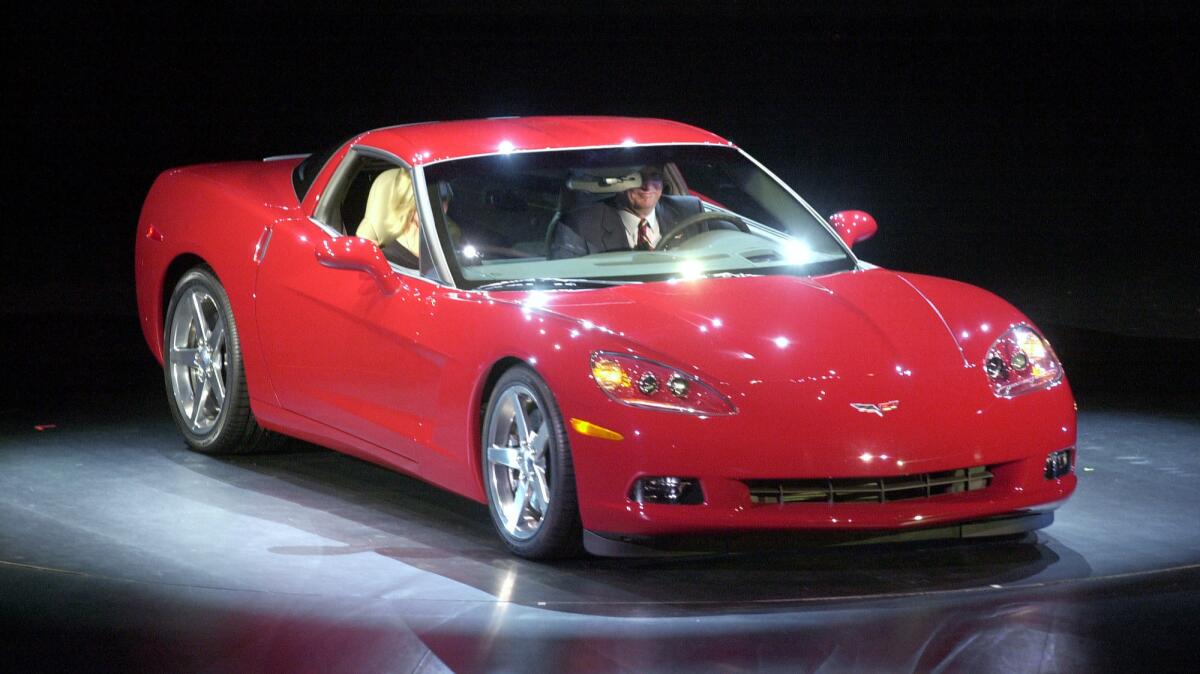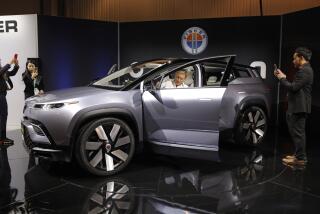From Duryea to Tesla, cars have evolved much like Darwin’s finches

- Share via
In Southern California, it’s not unusual to find people who treat their cars as if they were alive — like they’re pets, or children.
But the comparison between cars and living things might not end there, according to one UCLA archaeologist.
From the primitive vehicles at the dawn of the American auto industry to the sedans, trucks, minivans, roadsters and station wagons on the road today, cars have radically evolved over the last century.
So Erik Gjesfjeld decided to study the evolution of cars in much the same way that Charles Darwin once studied the evolution of finches on the Galapagos Islands.
See the most-read stories in Science this hour »
For Gjesfjeld, looking at the American auto industry as if it were a living ecosystem can help answer questions about how various kinds of things — whether they’re cars, smartphone apps or medicines — evolve over time.
“Cars just make an amazing system to study because of their detailed historical record and because of their amazing diversity,” said Gjesfjeld, a postdoctoral fellow at UCLA’s Institute for Society and Genetics and lead author of a recent study in the journal Palgrave Communications.
By likening cars to Darwin’s finches, the Toyota Matrix driver has been able to predict that the number of electric-powered models will be equal to the number of gasoline-guzzling varieties by 2030.
In Gjesfjeld’s analysis, the Dawn of Automobiles arrived with the humble Duryea.
First made in 1893, the vehicle was essentially a gas-powered buggy with metal tires and a four-horsepower engine. The Duryea Motor Wagon Co. sold 13 of them in 1896.
Cars have come a long way since then. Altogether, Gjesfjeld traced the history of 3,575 car models made by 172 companies.
He wanted to know how we got from a single open-air buggy to the Ford Expedition, the Tesla Model S, the Chevrolet Silverado and dozens of other models out there now. Did it develop gradually or did it come about in large bursts of innovation?
To find the answer, he started to think like a paleontologist. If cars were dinosaurs, they would be a dream research subject.
We know when a particular model was first introduced (i.e., when the species originated), and we know the year it last appeared on the market (when the species went extinct). All the crucial information is right there in the name of the vehicle: 1969 Ford Mustang. Year, make, model.
“You can almost think of it as a perfect fossil record,” Gjesfjeld said.
Gjesfjeld and his team did not consider the emergence of vehicle traits and features, like air conditioning, pointy tail fins or spinning rims; that would have required massive amounts of data and time. Instead, they took a macro view of evolution, defining innovation as the introduction of a brand new car model.
The researchers found that survival of the fittest applies to cars, just as it does to living creatures.
Nearly two-thirds of American car models died out in less than three years. In part, that’s because prewar manufacturers used to assign their vehicles new model names each year.
Among the longest-lived car models in America are the Chrysler Town & Country, which has been in production for more than 70 years, and the Chevrolet Corvette, now more than 60 years old.

At some points in the history of the American auto industry, manufacturers offered so many different vehicles that they were competing with themselves.
“All those organisms are in competition for resources,” Gjesfjeld said. “When there are so many cars available to each consumer, that sort of drives whether a car manufacturer decides to introduce a new model — whether they think it can survive in that market.”
As time went on, carmakers produced fewer models in an attempt to shift the focus on their brands.
Before the Depression, automakers unveiled new car models each year. At its peak in 1930, 45 companies pushed out 74 new models, Gjesfjeld said.
Paleontologists would refer to this period as a “radiation event,” as new species rapidly appear and fill in empty ecological niches.
But the Depression and World War II proved fatal for many car companies and models. After the war, Chrysler, Ford and General Motors emerged as the most prominent manufacturers in the U.S.
Another wave of extinctions occurred in the 1980s, coinciding with the rise of imported vehicles and the introduction of new fuel efficiency standards.
As cars have became more specialized over the last 30 years, carmakers found it was more efficient to manufacture fewer models. This limits the potential for the kind of experimentation seen before World War II.
“We’re slowly losing [American] car models,” Gjesfjeld said. “People are driving more cars, but it seems since the late 1970s, we’re driving more of the same car.”
“Green” cars are the exception. Electric and hybrid vehicles are in the midst of a great radiation. Manufacturers are searching for winning designs by developing a wide variety of models, Gjesfjeld said.
“It’s hard to say which one of those species will become the dominant species,” he said. “No one knows what the Model T” of electric cars will be.
The same techniques could be applied to other, less-understood sectors, including medicines and smartphone apps.
Gjesfjeld recently undertook an examination of offerings at Apple’s App Store. He wants to know how long new apps will continue to appear until one app of a particular type dominates.
“You don’t see it when you’re in it, but you see it from hindsight,” he said. “That’s the theory of evolution.”
Follow me on Twitter seangreene89 and “like” Los Angeles Times Science on Facebook.
MORE IN SCIENCE
Ethical dilemma on four wheels: How to decide when your self-driving car should kill you
Super-sticky saliva helps chameleons catch huge prey, scientists say
New therapy keeps HIV at bay without daily drug regimen, study says







